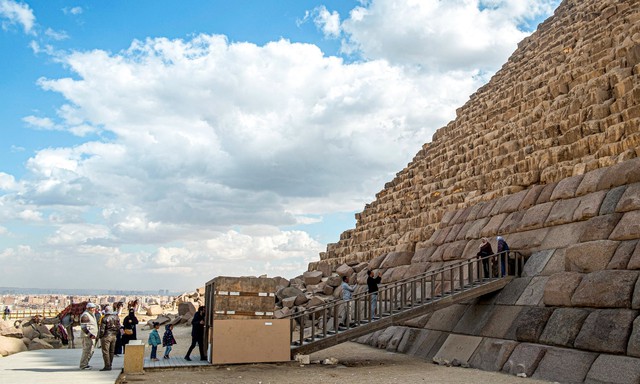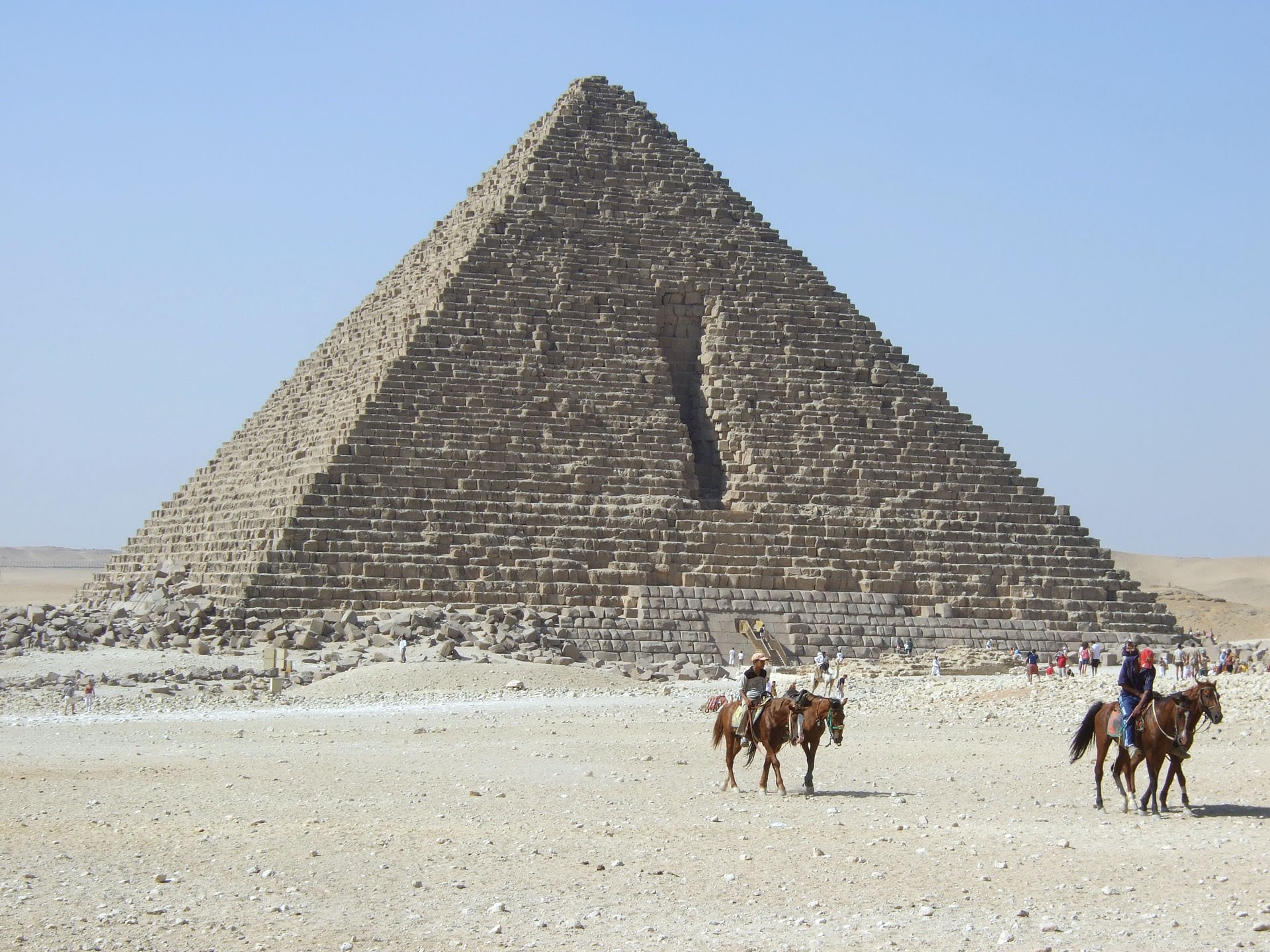According to The Guardian, recently, the Egyptian Ministry of Tourism and Antiquities has launched a project to restore the original shape using granite blocks that make up the outer shell of the Menkaure pyramid - the smallest of the three main pyramids of the Giza pyramid complex.
The Egyptian Ministry of Tourism and Antiquities is collaborating with a Japanese delegation to carry out the project. Dr. Mostafa Waziri, Secretary General of the Supreme Council of Antiquities, noted that this is a large project that requires many collaborators. Waziri and Dr. Yoshimura Sakoguchi are the leaders of the restoration mission.
“There have been many projects throughout history that have been dubbed the ‘Project of the Century,’ but in my opinion, the task of restoring the granite casing of the Pyramid of Menkaure is as important and significant as any of them,” said Mr. Waziri.
He described the project as "a gift from Egypt to the world", coinciding with the upcoming opening of the Grand Egyptian Museum, as it will allow visitors to "see the entire pyramid in modern times".

Tourists pose for photos at the foot of the pyramid. Photo: Khaled Desouki/AFP/Getty Images
Originally 16 granite blocks were used to make the pyramid's outer casing, but today only seven remain. The three-year project, which included research, measurements, laser scanning, and finally the construction of the stone casing, was led by Mostafa Waziri, head of Egypt's Supreme Council of Antiquities.
Archaeologist Ahmed Mohammadi said that archaeological discoveries in Egypt are boosting tourism in the country.
"We have observed descriptions of the Pyramid of Menkaure in ancient drawings and inscriptions, and they are different from the current state. This project will restore the pyramid to its original state as it was built by the ancient Egyptians," said Ahmed Mohammadi.
Many controversial opinions
Workers are now placing granite blocks at the base of the pyramid, which sits alongside the Sphinx and the larger pyramids of Khafre and Cheops in Giza, near the Egyptian capital Cairo, said Mostafa Waziri, head of Egypt's Supreme Council of Antiquities.
The three great pyramids of Egypt, Khufu, Khafre and Menkaure, are perfectly aligned on the ground. At the famous Giza pyramid complex in Egypt, the three great pyramids always receive great attention from the public as well as experts. Not only are these pyramids thousands of years old, they also contain curious secrets.
When it was originally built, the pyramid was covered in granite, but over time some of the covering lost its cladding. The renovation aims to restore it to its original form by re-coating the granite.
Earlier, Mr. Waziri posted a video on Facebook, recording the scene of workers moving large granite blocks to the area at the foot of the Menkaure pyramid.
But the video has drawn mixed reviews. Despite positive reviews from project officials, the decision to restore the Menkaure pyramid has sparked controversy on social media.
"Impossible! The only thing missing is tiling the pyramid of Menkaure! When will we stop this nonsense in heritage management?" wrote Egyptologist Monica Hanna.
"Instead of tiling, why not wallpaper the pyramids?" another said.
Meanwhile, Ibrahem Badr, Associate Professor of Archaeological Restoration and Conservation, also said that this is a serious situation. Someone needs to read the international conventions on the restoration and handling of Egyptian antiquities.
Heritage conservation is often a hotly debated issue in Egypt, where tourism accounts for 10% of GDP. The country recently launched an investigation after a renovation contractor painted the elaborately carved ceiling of the 15th-century Abu al-Abbas al-Mursi Mosque in Alexandria white.
The Pyramid of Menkaure dates back 4,500 years and is the tomb of Pharaoh Menkaure, who ruled the 4th dynasty of Egypt. At that time, the ancient Egyptians did not have modern technology or equipment, but they were able to align 3 pyramids in a straight line on the ground.
The pyramid is 61 meters high, originally over 65 meters high. The 16 outer stone layers are red granite, 7 of which are still intact. The upper layers are covered with white limestone. The faces of the three pyramids of Khufu, Khafre and Menkaure are also almost perfectly symmetrical. The sides and peaks of these structures almost coincide with the sides and peaks of the compass.


































